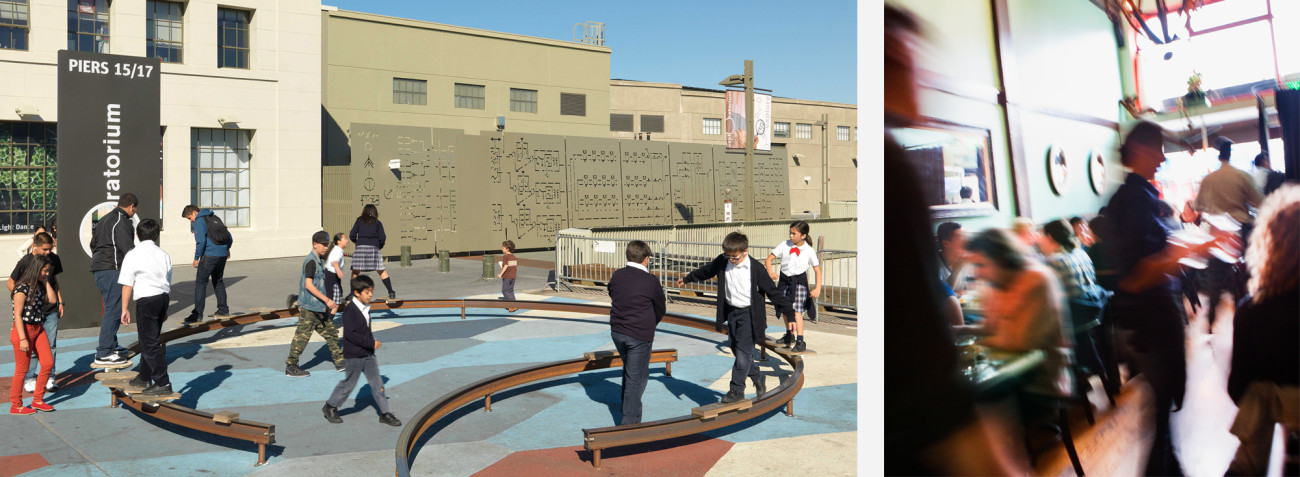The San Francisco County Transportation Authority will test self-driving shuttles on Treasure Island, as well as introduce a toll system from the Bay Bridge to the island.
The projects are supported by a $11 million federal grant awarded to the City of San Francisco last week to implement six transportation projects, with the goal of reducing traffic congestion. SFCTA will spearhead the Treasure Island toll system and self-driving shuttles programs.
A fleet of EasyMile Shared Driverless Vehicles.
Enlarge
A fleet of EasyMile Shared Driverless Vehicles.
Alain Herzog
“The idea of the shuttle is to provide first and last mile transport,” SFCTA Executive Director Tilly Chang told the Business Times. “The idea was always to provide this connection. It’s all meant to support the island’s economic development plan.”
Treasure Island is in the middle of a major redevelopment with the construction of 8,000 new homes in the next 15 years by developers Lennar Corp. and Wilson Meany. A big part of the transit infrastructure on the island will be future ferry service that runs to the Ferry Building and the shuttles would run visitors, residents and employees from the ferry terminal to stops throughout the island.
The transportation agency said the Treasure Island program serves as a blueprint and laboratory for larger rollout in the Bay Area in the future. Self-driving shuttles aren’t yet meant for public streets, which makes them perfect for transport within closed spots such as Treasure Island and San Ramon’s Bishop Ranch, which debuted the shuttles in 2015 to transport office workers around its immense campus. California requires new laws if driverless cars are to hit public roads.
“It’s such a new area that we all need to work together in the autonomous vehicle sector,” Chang added.
With about $2 million over the next four years of the awarded funding, SFCTA expects to start testing its electric, autonomous shuttles through the GoMentum Station testing site, based in Concord.
This year, the agency says it will test 12-passenger vehicles there and expand to testing to Bishop Ranch in San Ramon later in 2017. By end of 2018, SFCTA plans to move the vehicles to the Treasure Island and continue testing there to prepare for service in 2020.
The three self-driving shuttles will connect riders between East Bay bus stops, ferries to San Francisco and Muni stops, taking people to the commercial and recreational spots on Treasure Island. Electric shuttle company EasyMile, which already has shuttles at Bishop Ranch, is a likely option to provide the vehicles.
Enforcing tolls to the island are meant to discourage Treasure Island residents and visitors from driving and encourage carpooling or using public transit instead. SFCTA expects to complete the tolling system installation in four years, using about $10 million of the funds.
The $11 million award from DOT will be matched by local funds and private contributions to total $32 million over the next four years. The grant awarded last week is part of the DOT’s Smart City Challenge started in December 2015, which asked cities to come up with ideas using data and technology to tackle their transportation problems.
Other funds from this award will go toward such as adding new high-occupancy vehicle lanes for public transit and carpoolers on highways 101 and 280, adding pickup curbs for carpools and introducing “smart” traffic signals around Mid-Market that will be timed to give public transit priority during peak hours.
All six projects will be completed by 2020, according to MTA spokesman Paul Rose.
Companies public and private have already been testing and using self-driving vehicles on a small scale. Mercedes-Benz in 2014 was testing self-driving cars at the former Concord naval base. That year the state granted Mercedes, Google and Audi test permits for driverless cars. The base is a safe place to test the tech, with 19 miles of paved roads untouched by the public.
In 2015, driverless shuttles debuted on the business campus Bishop Ranch in San Ramon, about 30 minutes east of Oakland. The Bishop Ranch shuttles are designed for solving the “last-mile challenge” to connect commuters from transit stops to their destinations.
Last year, Uber released a fleet of self-driving cars on San Francisco streets — only to pull the plug after a week when the state DMV warned the company to stop. Uber has since moved its autonomous cars experiment to Arizona.
The San Francisco Municipal Transportation Agency, partnering with SFCTA, University of California at Berkeley and San Francisco incubator program Superpublic, will oversee the funds from the U.S. Department of Transportation.
Read the full article here>>
